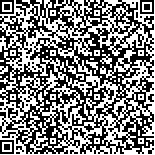附件
|
| 引用本文: | 全栋,张生,史小红,孙标,宋爽,郭子扬.环境因子对乌梁素海水体营养状态的影响:基于2013-2018年监测数据的分析.湖泊科学,2020,32(6):1610-1619. DOI:10.18307/2020.0604 |
| QUAN Dong,ZHANG Sheng,SHI Xiaohong,SUN Biao,SONG Shuang,GUO Ziyang.Impact of water environment factors on eutrophication status of Lake Ulansuhai based on monitoring data in 2013-2018. J. Lake Sci.2020,32(6):1610-1619. DOI:10.18307/2020.0604 |
|
| |
|
|
| 本文已被:浏览 5846次 下载 26085次 |

码上扫一扫! |
|
|
| 环境因子对乌梁素海水体营养状态的影响:基于2013-2018年监测数据的分析 |
|
全栋, 张生, 史小红, 孙标, 宋爽, 郭子扬
|
|
内蒙古农业大学水利与土木建筑工程学院, 呼和浩特 010018
|
|
| 摘要: |
| 为探明寒旱区浅水型湖泊乌梁素海水环境因子对水体营养状态的影响程度,以2013—2018年1月和7月湖泊水环境监测数据为基础,对具有典型代表性监测点的水体营养状态与水环境因子(盐度、pH值和水深)之间建立向量自回归模型(VAR)模型,通过方差分解方法分析水环境因子对水体营养状态的贡献水平,同时界定出水体营养状态处于最佳水平条件下的水环境因子的适宜范围.结果表明:水环境因子对水体营养状态的方差贡献初期表现显著而后趋于稳定,且盐度、pH值和水深指标的综合方差贡献率最高可达66.62%;并以全湖94.4%的水体面积不呈现富营养化状态作为标准界定出乌梁素海水体处于最佳营养状态水平条件下盐度、pH值和水深指标的适宜范围,分别为0.06~2.68 g/L、7.50~8.63和1.76~3.50 m,且湖泊在此营养水平条件下全湖盐度、pH值和水深指标的均值分别为1.55 g/L、8.15和2.33 m.因此,可以通过人类活动调控湖泊水环境因子值,并实施以水养湖的策略来推动湖泊水体营养状态向良性发展. |
| 关键词: 乌梁素海 水环境因子 营养状态 方差分解 VAR模型 |
| DOI:10.18307/2020.0604 |
| 分类号: |
| 基金项目:国家自然科学基金项目(51669022,51509133)和国家重点研发计划项目(2017YFE0114800)联合资助. |
|
| Impact of water environment factors on eutrophication status of Lake Ulansuhai based on monitoring data in 2013-2018 |
|
QUAN Dong, ZHANG Sheng, SHI Xiaohong, SUN Biao, SONG Shuang, GUO Ziyang
|
|
College of Water Conservancy and Civil Engineering, Inner Mongolia Agricultural University, Hohhot 010018, P. R. China
|
| Abstract: |
| To get a better understanding of the impact of the major water environment factors on the eutrophication status of Lake Ulansuhai located in a cold and arid region, VAR model was introduced to identify the impact based on the water environment factors (such as salinity, pH and water depth) monitored in January and July between 2013 and 2018 at the typical representative sites in the lake. The contribution of the water environment factors to the eutrophication status was analyzed by the variance decomposition analysis method. The ranges of the water environment factors were suggested that would construct an appropriate eutrophication status in the lake. The results showed that the variance contribution of the water environmental factors to the eutrophication status of the lake was significant at the initial stage and then tended to be stable. The contribution rate by means of the comprehensive variance of salinity, pH, and water depth was up to 66.62%. This suggested that if the indexes of salinity, pH, and water depth in Lake Ulansuhai were controlled among the range of 0.06-2.68 g/L, 7.50-8.63, and 1.76-3.50 m respectively, the 94.4% of the lake open water area would not presented as eutrophication. In this case, the average of the salinity, pH, and water depth would be 1.55 g/L, 8.15, and 2.33 m, respectively. This indicated that the lake eutrophication status could be controlled to some extend through artificially regulating the lake water environment factors. |
| Key words: Lake Ulansuhai water quality factors eutrophication status variance decomposition VAR model |
|
|
|
|